Known as the “pearl of Istria,” Rovinj lives up to its moniker and then some. The combined charm of the town’s architecture, history, culture, and cuisine make Rovinj a sensory delight, and a must-visit while in the region.
Rovinj (pronounced “roh-VEEN”) and the rest of the Istrian Peninsula were part of Italy until after World War II, and the former ruler has left an indelible mark on the region that permeates to this day. The peninsula even remains bilingual, with both Croatian and Italian recognized as the two official languages of Istria.
Here, we detail the best things to see and do while in Rovinj.
Jump to:
- How to Get to Rovinj
- Where to Stay in Rovinj
- How Many Days are Recommended?
- The Best Time of Year to Visit
- What to See and Do in Rovinj
- Stroll through the Old Town
- Where to Eat in Rovinj
How to Get to Rovinj
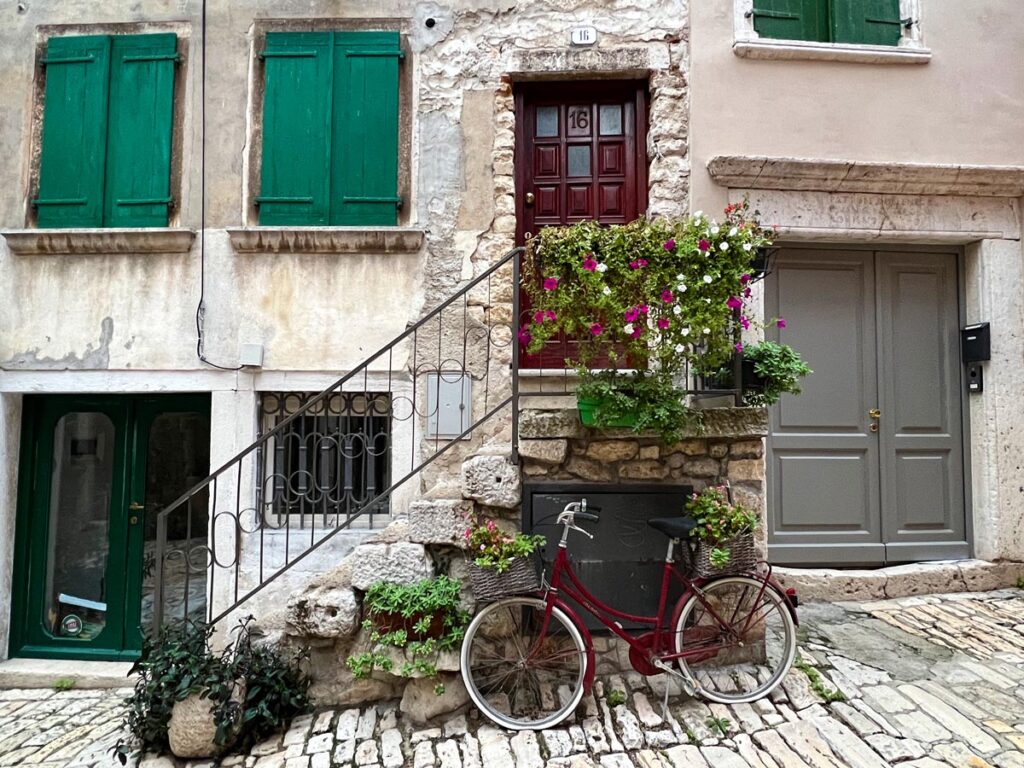
By Car
Having a car is the most convenient option to get to Rovinj. The old town is entirely pedestrian and easily walkable, so you won’t need the car once you arrive. But the flexibility allows you to be on your own schedule and take day trips to other parts of Istria.
If you can, it’s highly recommended to take a day trip while here, to soak up the full flavor of this wonderful corner of the world.
In Rovinj, there are multiple parking lots at the edge of the old town, just a few minutes’ walk to your lodgings.
Parken Rovinj Hafen (directions here), is conveniently located and has a great waterfront view of the old town. The views are so great, in fact, you’ll often find photographers gathering here for photos.
By Air
The closest airport to Rovinj is Pula (38 km/24 miles away), which operates flights to and from all major European cities.
From the airport, you can either rent a car, catch a taxi, or take the Rovinj shuttle (€25, high season only) for the approximately 40 minute drive to Rovinj.
For alternate airports, the next closest are Rijeka or Trieste (approximately a 2-hour drive each), Ljubljana (2.5-hour drive), or Zagreb or Venice (3-hour drive).
By Bus
Rovinj is well-serviced by bus, and you can catch a ride from most major cities across Europe.
The closest hubs include Zagreb, Trieste, Venice, and Ljubljana. You’ll also find bus routes from smaller regional towns (including Pula, Rijeka, Piran, and more).
Some of the biggest bus companies servicing Rovinj are FlixBus, Arriva, and Brioni. The town’s only bus stop will deposit you a 5-minute walk from the main square.
By Ferry
Oddly, there are no ferry routes between Rovinj and other Croatian towns.
But during the high season, you can take a ferry between Rovinj and Italy; specifically to and from Cesenatico, Triese, and Venice. Service is offered a few times a week in May, June, and September, and daily in July and August. Buy tickets here.
Where to Stay in Rovinj
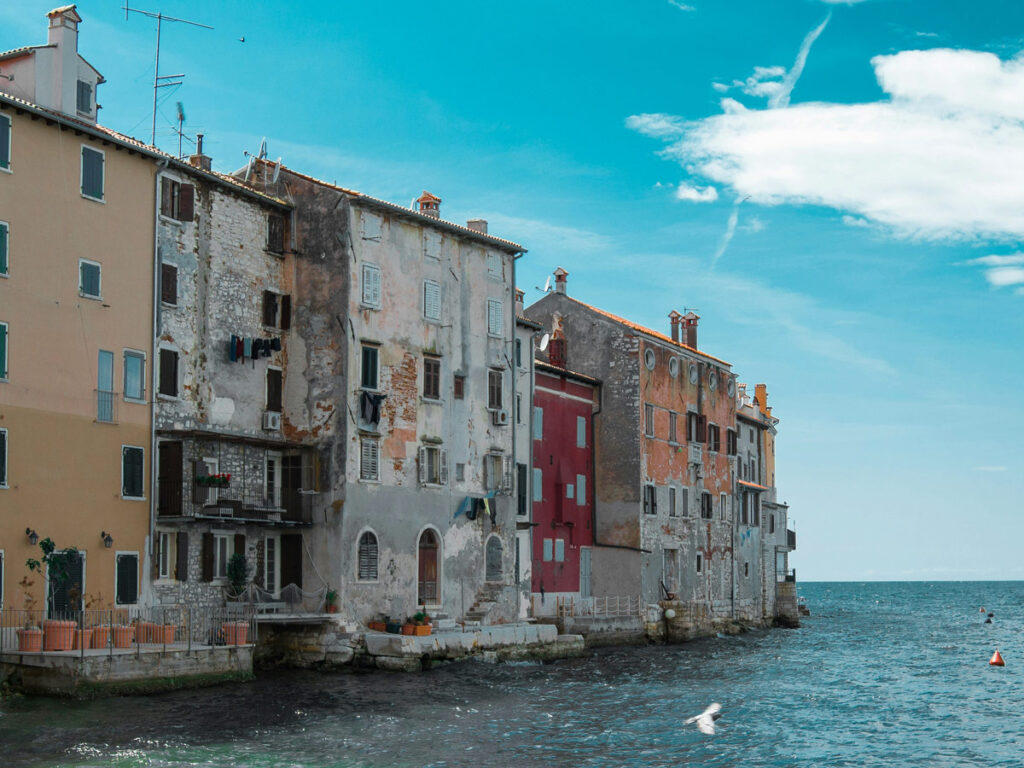
Rovinj is a small town, walkable from one end to another in 15 – 20 minutes. Thus, anywhere you stay will be close to the main plaza, marina, shops and restaurants.
With a certain refinement to it, Rovinj won’t be the cheapest place you’ll ever stay. However, you can still find reasonable hotel rooms, apartments, and B&Bs under €100 even during high season.
Alternatively, if you’re looking to splurge, Maistra operates two opulent properties in town: the Hotel Adriatic for old world charm right on the main plaza, and the minimalist modern Grand Park Hotel located a 5-minute walk from the town center.
For what it’s worth, we stayed at Villa Duketis and really enjoyed it. Just a block off the town square, this renovated centuries-old home provided all modern amenities while retaining an authenticity of the “real” Rovinj of years past. The friendly husband-and-wife proprietors grew up just blocks away, and were able to provide lots of “local” recommendations during our stay.
How Many Days are Recommended in Rovinj
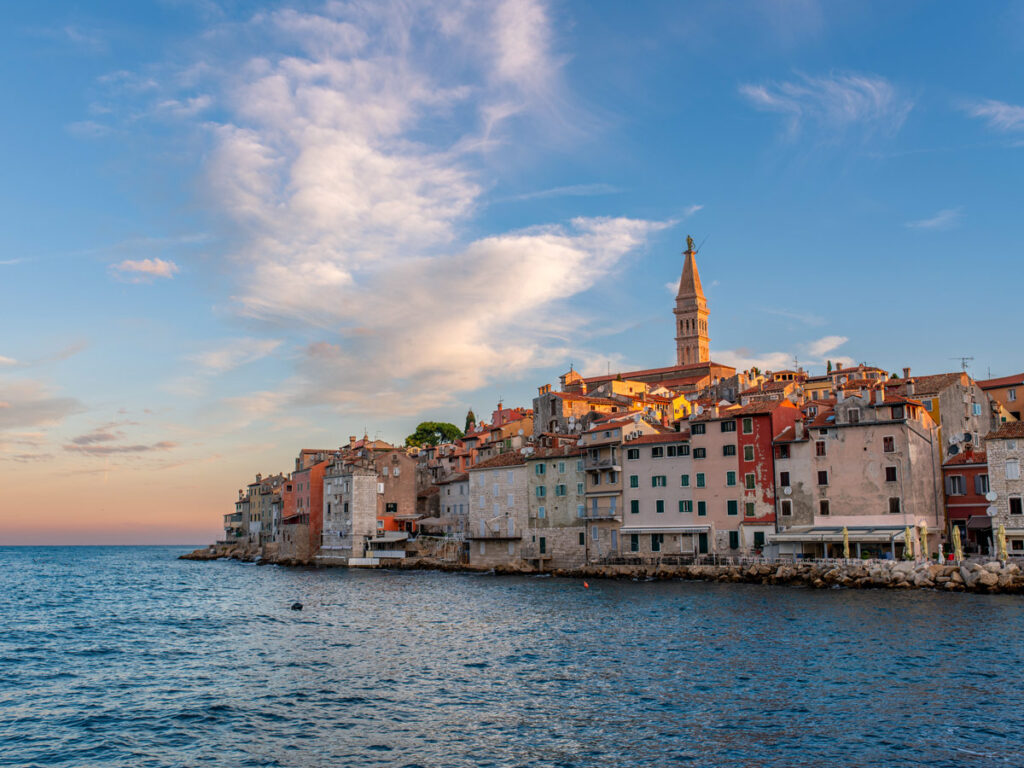
At a bare minimum, aim to allot 1 full day and 2 nights in Rovinj.
As to be expected with a former Italian outpost, however, there is a certain dolce far niente in Rovinj that would be a shame to deprive yourself of. Give yourself an extra day or two to fully immerse and soak up the ambience of Istria’s pearl. You won’t regret it.
The more recommended itinerary is 3 days/3 nights to fully appreciate la dolce vita here. Arrive on your first day, take a day trip to neighboring parts of Istria on the second, and idle along Rovinj’s promenades and beaches on the third.
The Best Time of Year to Visit Rovinj
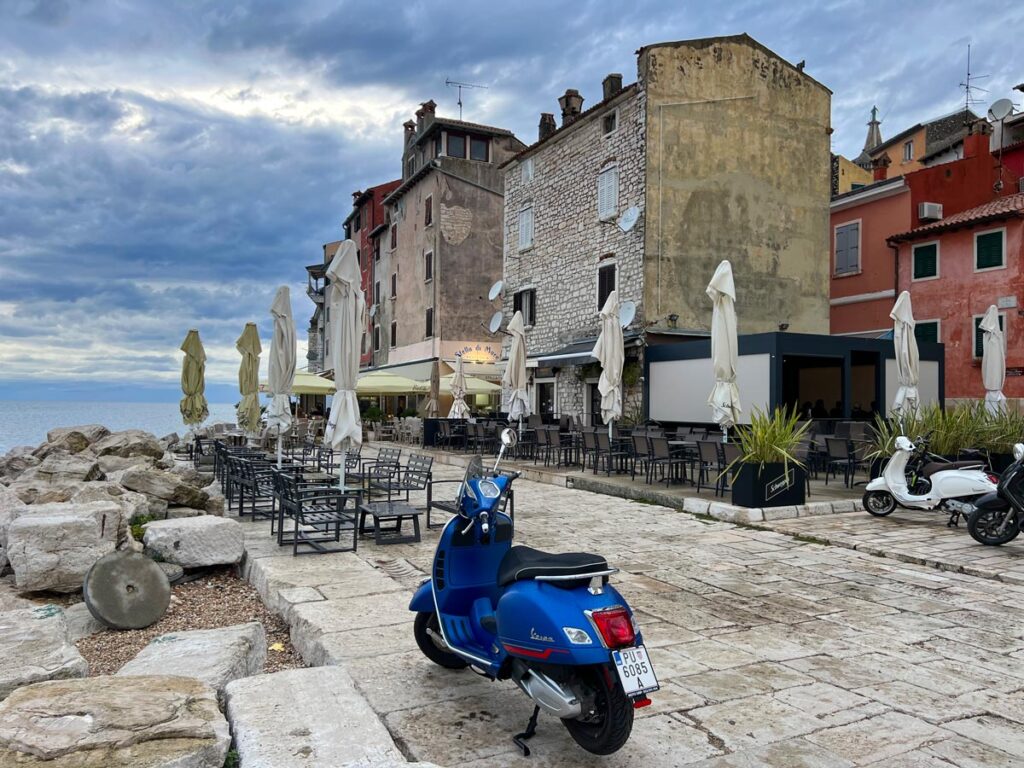
With a temperate Mediterranean climate, there is no bad time of year to visit Rovinj. January and February are the coldest months, with temperatures hovering around 6°C/43°F, but it quickly warms up through the spring, with mild sunny days lasting long into October.
Summer temperatures hover around 23°C/73°F, but even these linger through autumn. Just expect September and October mornings to be a bit crisper, before the day warms up.
What to See and Do in Rovinj
An ancient fishing village from pre-Roman times, over the millennia Rovinj has passed through the hands of the Romans, Byzantines, Venetians, Austrians, Italians, and Yugoslavians.
You’ll notice the lasting influence of each, during your time here.
Stroll through the Old Town

Rovinj is easily traversed in a 30–40-minute roundtrip walk, but part of the enjoyment is wandering its quaint cobblestoned streets.
Keep walking upwards, and you’ll inevitably find your way to St. Euphemia’s Basilica, the town’s Baroque church with several works of art and the namesake saint’s relics preserved in a 6th century roman sarcophagus.
The church plaza affords broad views of the Adriatic from the highest point in town.
See some Grand Masters at the Rovinj Heritage Museum
This local museum, located inside a 17th century baroque palace, is Istria’s preeminent collection of art from the Renaissance to modern day.
While not large, it provides a great look into the region’s art history, with additional rotating temporary exhibits during the peak summer months.
Go wine-tasting to experience Croatia’s local varietals

Croatia has numerous award-winning grapes that still remain fairly unknown outside the region. Perusing local wine lists, you’ll soon become familiar with malvazija (a light, almost lemony white), teran (a rich berry red), and plavac mali (an earthy red).
Venture outside Rovinj’s walls, to taste for yourself: Coronica, Koslovic, Cossetto, and Kabola all provide a wonderful tasting experience — it’s best to make a reservation ahead of time.
Lounge at one of Rovinj’s multiple beaches
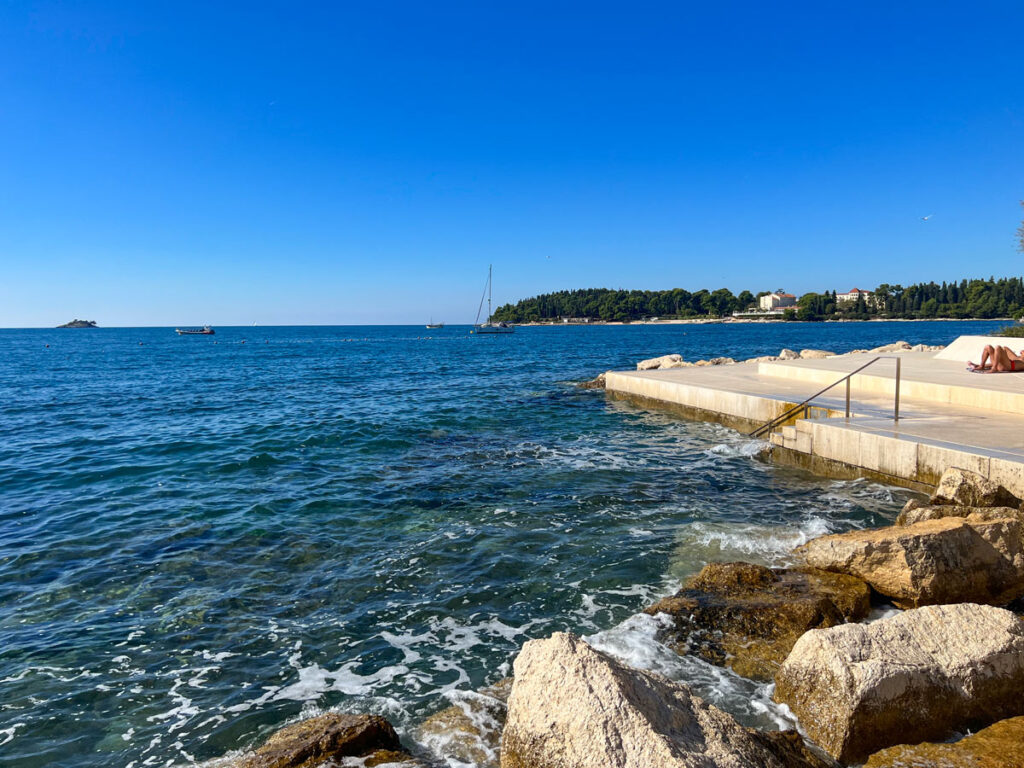
Just past the Grand Park Hotel on the south side of town are the majority of Rovinj’s beaches. Mulini Beach offers chair rentals for €19, but those not wanting to pay will find a public access area about 100 meters north, with travertine paving to stretch out on.
Further down the point (about a 20-minute walk past Mulini Beach) is Golden Cape, a secluded cove with pebble and sand beaches that is often advertised as Rovinj’s “main” beach.
For those not wanting to walk, the old town still has options: Plaža Balota is not so much a beach as a series of rocky outcroppings with water access, but it still makes a lovely time to stretch out on a towel and dip in the sea when you’re ready to cool off.
Take an evening passeggiata along the waterfront
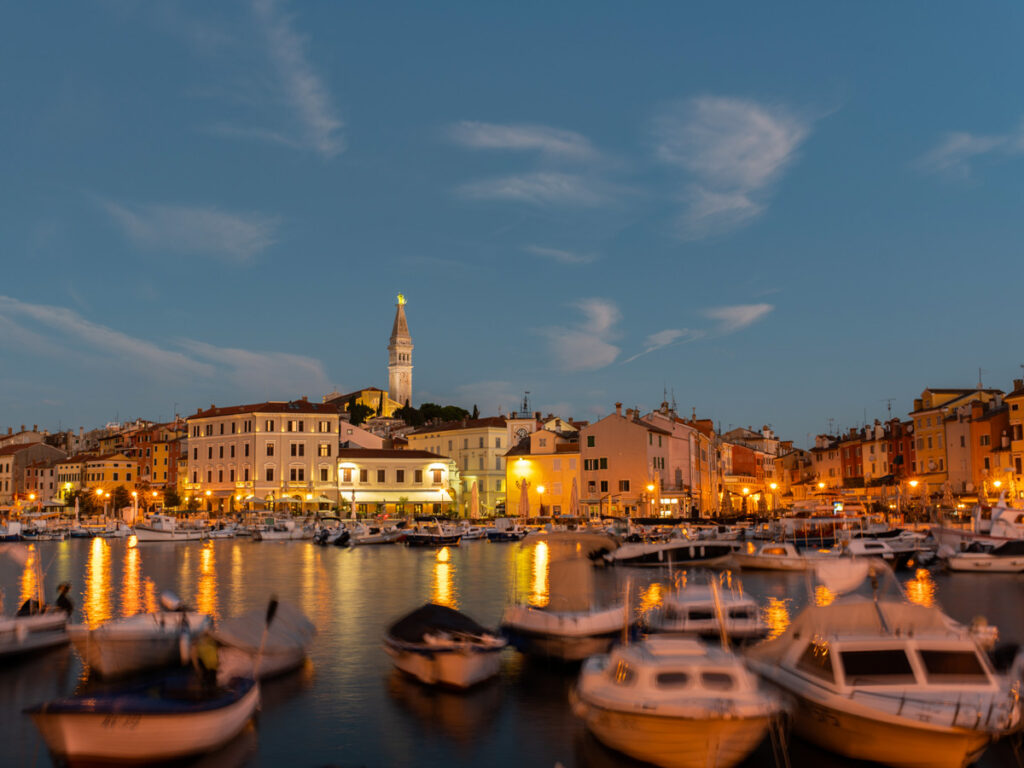
During the evening hours, the promenade that hugs the Port of Rovinj comes alive, buzzing with cheery locals and holidaymakers alike.
You can amble the length of the marina, stopping to admire the twinkling lights of the old town at dusk, before popping into any number of waterfront cafes and restaurants that strike your fancy.
Sail to the neighboring islands just offshore
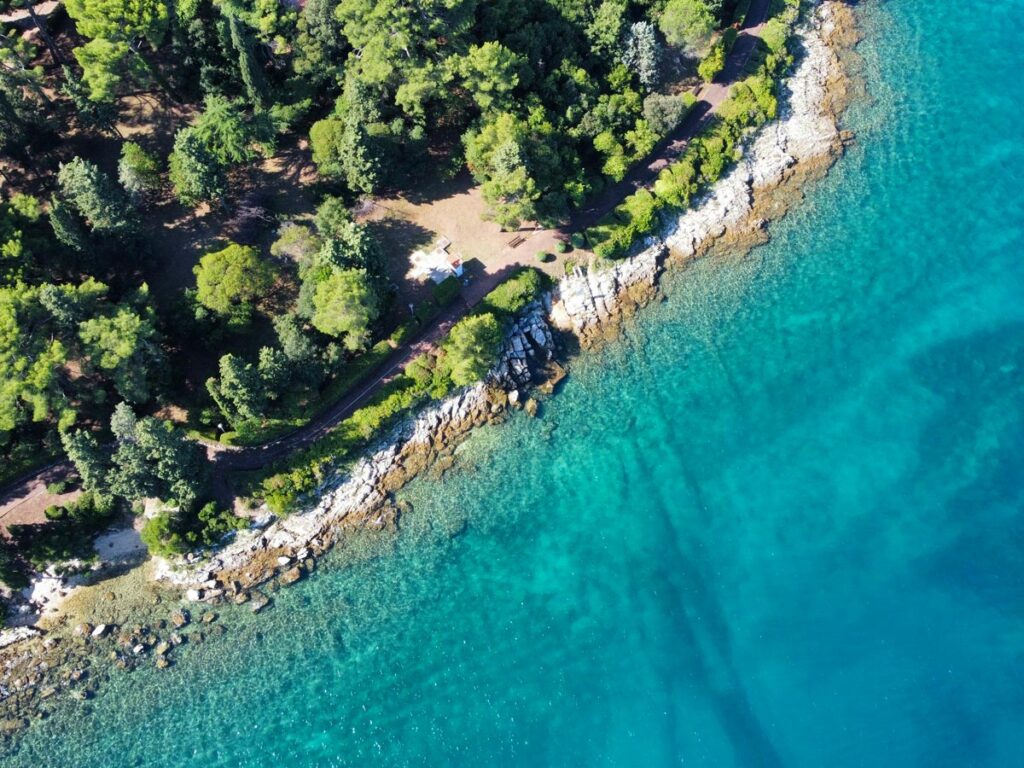
Both Crveni Otok and Sveta Katarina are accessible by a quick ferry from the town center, and the islands’ secluded beaches will make you feel much further removed than the 10-minute boat ride it takes to get there.
Each island is also home to its own 4-star luxury hotel, which are a treat to pop in once you’re ready to get a taste of civilization again.
Take a day trip to neighboring Istrian towns
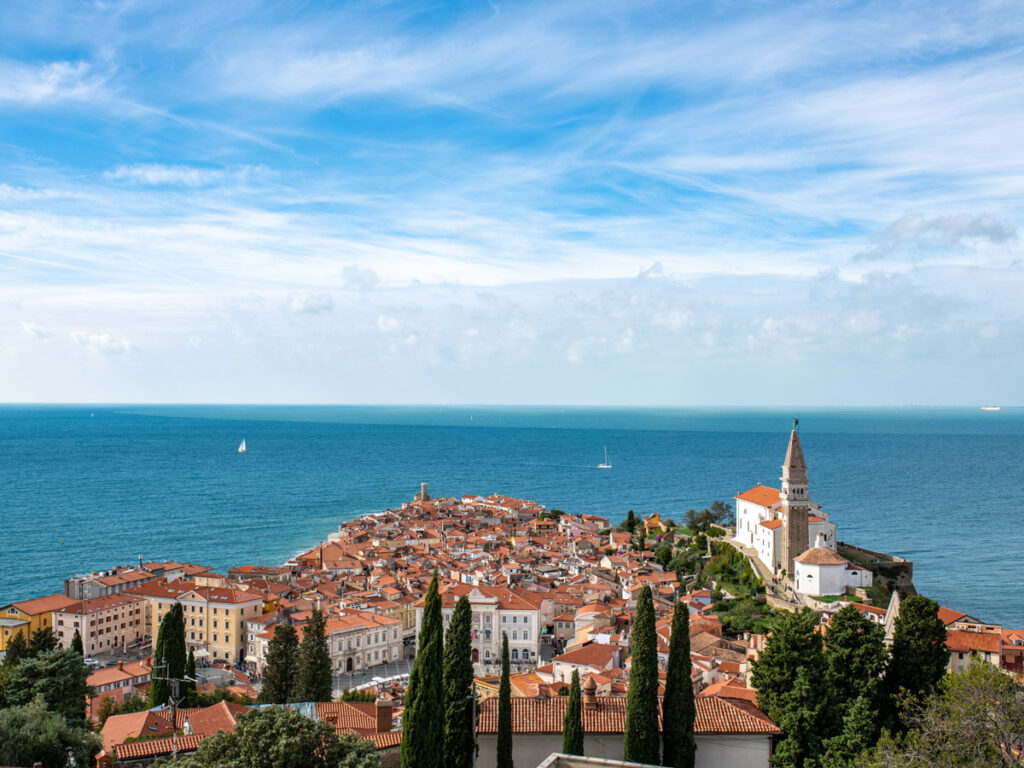
For a more comprehensive perspective of this unique region, venture out to one of the numerous seaside and hilltop towns of Istria.
Motovun (on the Croatian side) and Piran (in Slovenia) are two of our favorites. You can read our guide to a day trip to Piran here.
Where to Eat in Rovinj
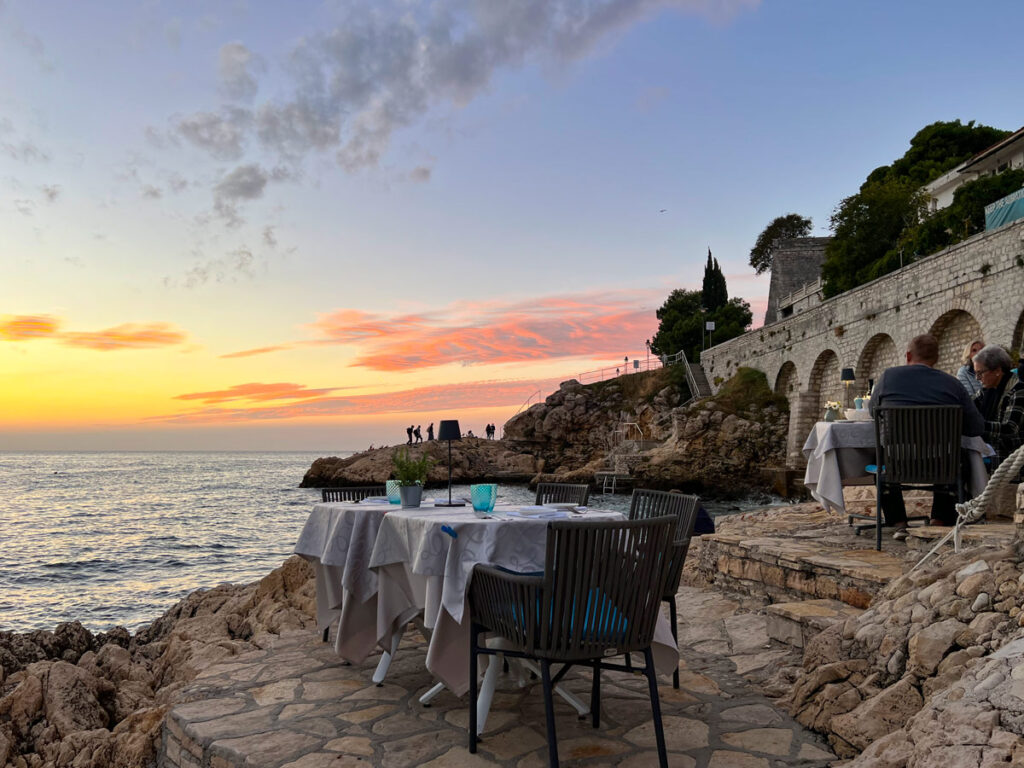
- La Puntulina: for ambience, this is hands down the best dining experience in Rovinj. Situated on the rocks at water’s edge, you’ll enjoy elevated dining while the Adriatic gently laps at your feet. It’s nearly impossible to get in without reservations, which book up far in advance – make yours as soon as you know the dates you’re visiting Rovinj.
- Balbi: recommended to us by locals, Balbi is situated on a quiet square in the heart of the old town. It’s a comfortable setting for wholesome regional specialties that reflect both the Italian and Yugoslavian heritage of Istria. We took the waiter’s recommendations for red fish soup, polenta and ricotta stuffed squid in tomato sauce, and oven-baked octopus with crispy potatoes – all of which were excellent.
- Snack Bar Rio: don’t be fooled by the “snack bar” name. This is a full-service restaurant that happens to be La Puntulina’s sister location. While a more casual dining experience, Rio serves up the same outstanding dishes at a lower cost. And… dare we say it… we thought the food here was even a smidge better than its more glamorous sibling. Crisp salads, grilled seafood, and the regional specialty šurlice pasta with scampi are all delectable. The only disappointment was paying the bill and being told “tip isn’t included.” It’s a common tactic that’s typically used by more touristy restaurants, and was the only damper on an otherwise outstanding meal.
- Hotel Adriatic: you don’t have to stay at the hotel to avail yourself of its old-world elegance. Sitting directly on the old town’s main square and waterfront promenade, the hotel’s outdoor terrace beckons you to post up for a while and watch the world go by. Whether you opt for breakfast at the French brasserie kitchen, a coffee or cocktail at the café and bar, or a traditional meal at the tavern (we did all three), you’ll have a front-row seat to people-watching Rovinj’s locals and tourists alike. Sunday mornings feature a live string quartet to elevate the atmosphere even further.

